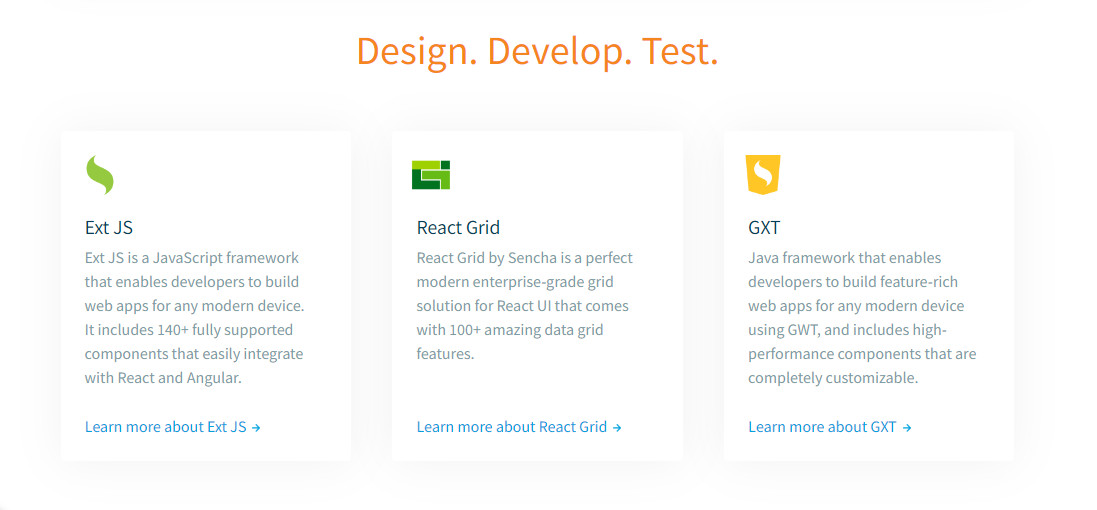How To Perform Cross-Platform Mobile Apps Development?

Developers adopt a cross-platform mobile app development approach to ensure that we can use the app on different platforms. In a cross-platform mobile apps development, we write a single codebase to build the UI components. Some most common examples of different platforms are Android and ios platforms. Moreover, it also includes the Windows platform.
But how do we achieve this development process? Well, it becomes possible through the use of frameworks and tools. They provide us with a common set of resources, libraries, and APIs. The best part to know is that we can access its UI components across different operating systems. Let’s start exploring the concept of cross-platform mobile development.

What Is The Importance Of Cross Platform Mobile App Development?
There are multiple advantages of cross-platform mobile development that highlight its importance. However, the first and most important of them is that it saves time as well as resources. This happens by deploying our app to multiple platforms. Simply put, it prevents the need to create a separate version of the app to run on each platform.
We must know that there are organizations and companies that come with very limited resources.
Cross-platform mobile development saves time and resources by giving an app that can be used on different platforms. It is also important when we need to launch our app quickly on multiple platforms.

Since it saves your costs from building separate native apps for each platform, cross platform mobile development has a higher cost-effectiveness. The native look and feel of this approach give an amazing user experience.
Let’s take a look at some prerequisites required for cross-platform app development.
What Are The Prerequisites For Developing Cross-Platform Mobile Apps With Sencha?
Sencha is one of the most popular frameworks used for cross-platform app development. However, it requires some prerequisites that app developers should always consider. The prerequisites set a base for developing cross-platform apps.
Let’s take a look at those prerequisites.
Supported Operating System
We must choose an operating system that Sencha will support. As a matter of fact, Sencha supports Linux, macOS, and Windows operating systems.
A Code Editor
We will have to install a reliable code editor to edit the code for our application. Visual Studio Code, Atom, and Sublime Text are the most commonly used code editors.

A Modern Web Browser
We should have modern web technologies to develop mobile apps using Sencha. Simply put, we will have to install the latest version of our web browser.
Firefox, Chrome, and Safari are some most common examples of modern web browsers.
JavaScript Knowledge
As a matter of fact, the Sencha frameworks are based on JavaScript. Therefore, it is important that we must have JavaScript knowledge to implement and integrate with Sencha frameworks.
Node.Js
Node.js is a JavaScript runtime environment. It is important to note that working with Sencha also requires knowledge of JavaScript. We have to install Node.js on our computer.
Supported Mobile Device Or Emulator
We will need a physical emulator or mobile device to test our application on different platforms. Devices that are supported by Sencha include Windows, iOS, and Androids.

What Is The Process Breakdown For Cross-Platform Mobile Apps?
It is interesting to note that cross platform app development using Sencha is similar to traditional app development. We have to follow steps that will be similar to traditional app development. It also includes the planning and designing of our applications’ user interface and functionality.
Here is the detailed breakdown for cross-platform app development.
Plan And Design The App’s User Interface And Functionality
First, we must create mockups and wireframes of our applications’ features and screens. It also includes the definition of user flow and user experience for our application.
We must consider the interest of our targeted audience. Moreover, it is also important to consider the platforms where we will deploy our application when designing and planning the app.
Set Up The Development Environment
We have to install and configure the necessary dependencies and tools in this step. For example, if we are using Sencha, then we have to install this cross-platform app development framework. Moreover, we should also consider the installation of necessary libraries and SDKs.
Build The App’s User Interface
We have to build the features and screens of our application through existing UI components as well as layout tools. Note that those layout tools and UI components are already provided
Implement App Logic And Data Handling
We have to add the necessary code to handle the user interactions. Moreover, it will also help us to retrieve and manipulate the data. As a result, we can perform other tasks required by the app’s functionality.
We can easily maintain and update the app using Sencha since it separates the app’s data, logic, and presentation layers.

Test And Debug The App
Finally, we need to run our app on different devices and ensure its cross-platform compatibility. We can also use Sencha tools to debug and fix the issues.
Package And Distribute The App
We have to develop the final version of our app and deploy it to different platforms. Moreover, we will also have to upload our app to AppStore and other distribution channels. The best part to know is that we can do it using Sencha packaging tools.
Maintain And Update The App
This includes fixing the app issues after our application is distributed. At this stage, we can also add new functions and features. We can update and maintain our app over time using Sencha.
Note that Ext JS and Sencha Touch are the two frameworks at Sencha that helps to develop cross-platform applications.
What Is Sencha Ext JS Framework?
Sencha Ext JS framework is the fastest JavaScript framework that helps us to create stunning apps. Moreover, it has high performing UI components. Using JavaScript development tools, we can design, develop and test using the amazing framework at Sencha.
We can create cross-platform and data-intensive apps using Sencha. Sencha Ext JS gives us a 30-day free trial in which we get full access to its resources.
Sencha has charts, forms, trees, grids, and a rich set of UI widgets. As a result, we can manage and manipulate a large amount of data. We can test, debug, and optimize the performance easily. We perform the tests of our application using unit testing at Sencha.

What Are The Key Features And Benefits Of Sencha For Cross Platform Mobile Apps Development?
Here are some key features and benefits of Sencha:
Single Codebase
It helps to build and deploy our application on multiple platforms.
Extensive UI Components
Sencha gives us access to a large variety of UI components that helps us to build a beautiful user interface.
MVC Architecture
Sencha’s model-viewer-controller architecture helps us separate app logic, data, and presentation layers.
Advanced Features
Advanced features like routing, data binding, and state management can help us to create complex apps.
Strong Community Support
We can interact with an active and large community of developers at Sencha. Therefore, we can understand the usage of resources in a much better way.
Extensive Documentation
The extensive documentation at Sencha makes implementing and integrating the Sencha framework easy. We can easily learn to use its features.

Build Your Cross–Platform Mobile App With Ext JS
Using Sencha for cross-platform development is an excellent decision. The developers can get access to a comprehensive range of integrated tools. As a result, it streamlines the development process.
FAQs
What Is Cross-Platform Mobile Application Development?
It is an approach that helps us to deploy our app on multiple platforms.
Can You Build Cross-Platform Mobile Apps?
Yes. Using Sencha, we can easily build cross-platform mobile applications.
Is Cross-Platform the Best Choice for Mobile App Development?
Yes. It increases the number of users of an application when it is exposed to different platforms.
Why Choose Cross-Platform App Development?
It saves our time and application by developing only one version of our application.

React is perhaps the most widely used web app-building framework right now. Many developers also…

React’s everywhere. If you’ve built a web app lately, chances are you’ve already used it.…

Join 5,000+ developers at the most anticipated virtual JavaScript event of the year — August…









